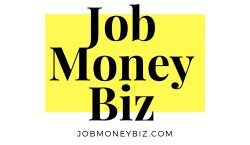When it comes to job hunting, your resume is your first and often only chance to make a positive impression on potential employers. A well-crafted resume can significantly increase your chances of landing your dream job. However, with the job market becoming more competitive than ever, it’s crucial to master the art of resume writing best practices. In this comprehensive guide, we’ll walk you through the essential steps of creating a resume that stands out and leaves a lasting impact.
Your resume serves as a snapshot of your professional journey, highlighting your skills, experiences, and accomplishments. In a world where recruiters often spend mere seconds scanning through resumes, it’s essential to follow best practices to ensure your document grabs their attention and compels them to learn more about you.
Resume Writing Best Practices
Crafting a standout resume requires a strategic approach that combines thoughtful content, elegant formatting, and impeccable presentation. Let’s dive into the best practices that will make your resume shine:
Understanding the Role and Company
Before you start writing, take the time to understand the job role you’re applying for and the company’s culture. Tailor your resume to align with the specific requirements and values of the organization.
Highlighting Key Achievements
Use bullet points to succinctly showcase your key achievements and contributions in your previous roles. Quantify your accomplishments whenever possible, as numbers and statistics lend credibility to your claims.
Utilizing a Professional Format
Choose a clean and professional resume template that enhances readability. Stick to a consistent font and avoid excessive use of bold or italics. A clutter-free format makes it easy for recruiters to quickly identify your qualifications.
Incorporating Relevant Keywords
Many companies use applicant tracking systems (ATS) to screen resumes. To ensure your resume makes it through this initial screening, incorporate relevant keywords from the job description.
Showcasing Skills
Create a dedicated skills section that lists both hard and soft skills relevant to the job. Include a mix of technical expertise and interpersonal abilities to present a well-rounded profile.
Providing a Strong Opening Statement
Your resume’s opening statement, also known as the summary or objective, should be a concise pitch that highlights your unique value proposition and career goals.
Listing Work Experience Effectively
Arrange your work experience in reverse chronological order, starting with your most recent job. For each role, include your job title, company name, dates of employment, and a brief description of your responsibilities.
Adding a Personal Touch
Consider including a section that showcases your interests and hobbies outside of work. This can provide insight into your personality and cultural fit within the organization.
Including Education and Certifications
Provide information about your educational background, including degrees earned and institutions attended. Mention any relevant certifications that strengthen your candidacy.
Using Action Verbs
When describing your accomplishments, use powerful action verbs that convey your contributions in a dynamic and engaging way.
Keeping it Concise
While it’s important to provide comprehensive information, aim for a one-page resume whenever possible. Be selective in choosing the most relevant details.
Seeking Feedback
Before finalizing your resume, seek feedback from mentors, colleagues, or professional resume writers. Fresh perspectives can help you identify areas for improvement.
Proofreading for Perfection
Typos and grammatical errors can leave a negative impression. Proofread your resume meticulously to ensure flawless content.
Adding a Personal LinkedIn Profile
Incorporate a link to your LinkedIn profile, making it easier for employers to access more information about your professional background.
Providing Quantifiable Achievements
Rather than listing generic job responsibilities, focus on achievements that demonstrate your impact. Use quantifiable metrics to showcase your contributions.
Tailoring for Each Application
Avoid sending out a generic resume to multiple employers. Customize your resume for each application, emphasizing the skills and experiences that align with the specific job requirements.
Showcasing Diversity of Experience
Highlight diverse experiences that contribute to your versatility. This could include freelance work, volunteering, or cross-functional projects.
Keeping References Ready
While it’s not necessary to include references on your resume, have a list of professional references ready to provide upon request.
Adding a Professional Email Address
Ensure your email address is professional and includes your name. Avoid using quirky or unprofessional email addresses.
Proof of Achievements
Back up your achievements with evidence when possible. This could include links to published work, presentations, or projects.
Showcasing Leadership Roles
If you’ve held leadership positions, such as team lead or project manager, highlight them to showcase your ability to take charge and drive results.
Using a Customized Format
While traditional resumes are the norm, certain creative roles may benefit from a more unconventional format that showcases your creativity.
Reviewing Consistency
Check for consistency in formatting, font usage, and bullet points throughout your resume. A polished and consistent document demonstrates attention to detail.
Finalizing with a Strong Closing Statement
End your resume with a compelling closing statement that expresses your enthusiasm for the role and invites further communication.
FAQs about Resume Writing Best Practices
How long should my resume be?
Your resume should ideally be one page, but if you have extensive experience, it can extend to two pages. Focus on relevant details that showcase your qualifications.
Should I include my entire work history?
Include relevant work experience from the past 10-15 years. Earlier experiences can be summarized or omitted if they are not directly relevant to the job you’re applying for.
Is it necessary to include a cover letter?
While not always required, a well-crafted cover letter can provide additional context and a personalized touch to your application. It’s especially useful when explaining career transitions or addressing gaps in your employment history.
How can I make my resume stand out?
Use quantifiable achievements, tailor your content to the job description, and incorporate keywords from the industry. A visually appealing format and a well-structured layout will also help your resume catch the recruiter’s eye.
Should I include references on my resume?
References do not need to be included on your resume. Instead, have a separate list of professional references ready to provide when requested by the employer.
How often should I update my resume?
Regularly update your resume, especially after completing significant projects, earning certifications, or receiving promotions. This ensures that your document is always current and ready for new opportunities.
Conclusion: Your Path to Success Starts with a Strong Resume
Crafting a winning resume requires a blend of art and science. By following these resume writing best practices, you’ll create a document that effectively communicates your skills, experiences, and accomplishments to potential employers. Remember, your resume is your gateway to exciting career opportunities, so invest the time and effort needed to make it truly shine.
Anupam M is blogging on this site on different aspects of technology, job, and business. He is an experienced IT professional with an Engineering degree from a premier NIT. Know more


